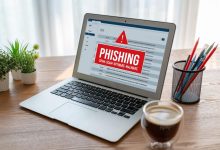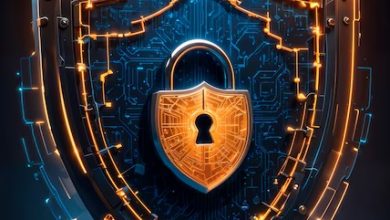
Ransomware Attacks
Ransomware Attacks, the rise of ransomware attacks has become a significant concern for individuals, businesses, and organizations of all sizes. Ransomware is a type of malicious software that encrypts your data and demands a ransom for its release. These attacks can have devastating consequences, from financial losses to data breaches and even business shutdowns. we’ll explore the factors contributing to the surge in ransomware attacks and provide practical steps on how to protect your data from this growing threat. Learn more about ransomware with check-point and get ahead with tech update with info tech

The Ransomware Epidemic: Why the Surge?
Ransomware attacks have been on the rise for several reasons, including…
Financial Motivation: Cybercriminals are primarily driven by financial gain. Ransomware attacks are lucrative for them, as victims are often willing to pay to regain access to their valuable data. The rise of cryptocurrencies like Bitcoin has made it easier for attackers to receive and launder ransom payments discreetly.
Sophistication: Ransomware attacks have become increasingly sophisticated. Attackers use advanced encryption techniques, social engineering, and automation to distribute their malware widely.
Ransomware-as-a-Service (RaaS): Criminals can now easily access ransomware tools and services on the dark web. This allows even those with limited technical skills to launch ransomware attacks, contributing to the proliferation of such attacks.
Vulnerable Software and Systems: Outdated and unpatched software, as well as security vulnerabilities, provide opportunities for attackers. They exploit these weaknesses to gain access to systems and deploy ransomware.
Remote Work: The COVID-19 pandemic accelerated the adoption of remote work, which created new attack surfaces for cybercriminals. Many organizations had to quickly adapt to remote work environments, leading to potential security gaps that attackers could exploit.
Protecting Your Data from Ransomware
While ransomware attacks are on the rise, there are effective measures you can take to protect your data and minimize the risk of falling victim to such attacks.
- Regular Backups: One of the most important safeguards against ransomware is regularly backing up your data. This ensures that even if your data is encrypted by ransomware, you can restore it from a clean backup. Store backups offline or in a secure, isolated environment to prevent attackers from targeting them. Automated backup solutions can help ensure that backups are up to date.
- Patch and Update: Keep your software, operating systems, and applications up to date. Software developers release updates and patches to address known vulnerabilities, and attackers often exploit outdated systems. Enable automatic updates wherever possible to stay protected.
- Email Security: Be cautious when opening email attachments and clicking on links, especially in unsolicited or suspicious emails. Email is a common vector for ransomware distribution. Implement robust email filtering and security solutions to detect and block malicious attachments and links.
- Security Software: Install reputable antivirus and antimalware software on your devices. These solutions can help identify and block ransomware before it can encrypt your data. Regularly update and scan your devices for potential threats.
- User Training: Educate yourself and your employees about the risks of ransomware and how to recognize phishing attempts and other common tactics used by cybercriminals. Training can help employees become the first line of defense against ransomware attacks.
- Access Control: Limit user access to critical systems and data. Not everyone in your organization needs full access to sensitive information. Implement the principle of least privilege to restrict access to what is necessary for each user’s role.
- Network Segmentation: Divide your network into segments to isolate critical systems from less critical ones. This limits the spread of ransomware in case of an infection and minimizes damage.
- Use Strong Passwords and Multi-Factor Authentication (MFA): Encourage the use of strong, unique passwords for all accounts, and enable MFA wherever possible. MFA adds an extra layer of security by requiring multiple forms of verification.
- Incident Response Plan: Develop and implement a comprehensive incident response plan. This plan should outline the steps to take when a ransomware attack is detected, including isolating infected systems, notifying appropriate authorities, and assessing the impact.
- Test and Update Your Plan: Regularly test your incident response plan to ensure it remains effective. Cyber threats evolve, so it’s essential to update your plan accordingly.
- Consider Security Services: For businesses and organizations, hiring cybersecurity experts or managed security service providers (MSSPs) can be a proactive approach. MSSPs can continuously monitor and protect your systems against threats like ransomware.
- Avoid Paying Ransoms: Law enforcement agencies and cybersecurity experts advise against paying ransoms. Paying the ransom does not guarantee that you will regain access to your data, and it funds criminal activities. Consult with law enforcement and cybersecurity professionals if you are a victim of a ransomware attack.
- Backup Your Backups: Ensure that even your backup solutions are secure. Some ransomware variants are designed to seek out and encrypt backup files. Implement multiple layers of backups, with some stored offline and away from your primary network.
Discover more from Infotech
Subscribe to get the latest posts sent to your email.






